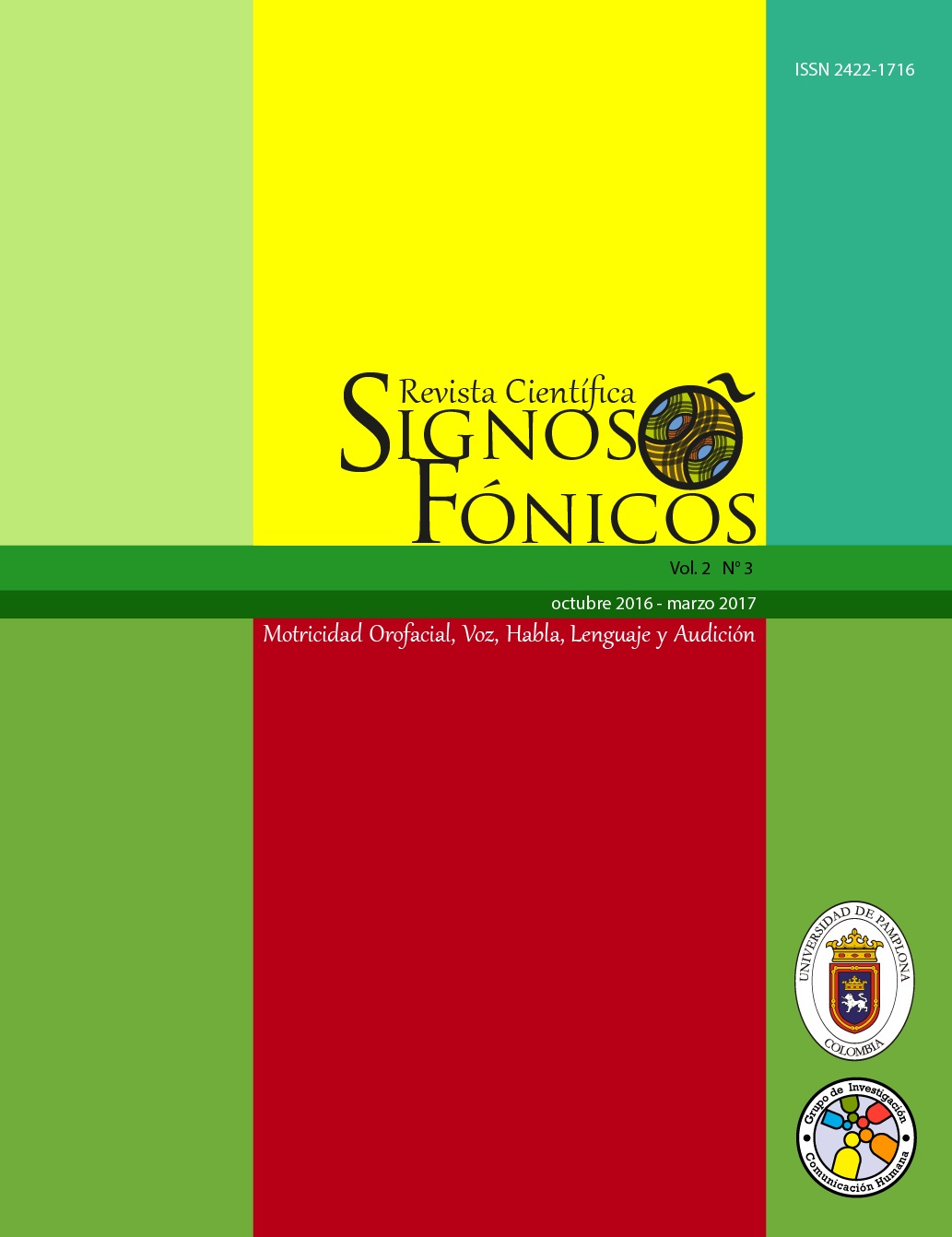Relationship between mandibular growth vectors anteroposterior and vertical size and weight in children between two and four years using orofacial pachymetry
DOI:
https://doi.org/10.24054/rcsf.v1i3.2091Keywords:
Mandibular growth vectors, Body Mass Index, MalocclusionAbstract
INTRODUCTION: The growth pattern of the mandible can be simplified into three vectors appo-sition, the first anteroposterior direction from the branch and to the gnatio; the second in the ver-tical direction on the angle described between the branch and the body of the mandible; and third horizontally on alveolar deposits. METHODS: The population of study was applied to 208 children between 2 and 4 years old from Cucuta citie. The statistical analysis performed was correlation matrix, and cnonican correlation. RESULTS: Positive statistical relationship for mandibular grow-th vectors of branch, long and base with Body Mass Index and Age was found. ANALYSIS AND DISCUSSION: There is a significant relationship between BMI values and age with the mandibular growth phenomena, from these findings is possible to propose studies for evaluation of anteropos-terior malocclusion with mandibular growth antrpometrics measures, and rethinking the diagnos-tic evaluation algorithms for orofacial functions because the inclusion of BMI as diagnosis index. CONCLUSION: Anthropometric measures proposed by the study are sensitive to the phenomenon of growth, particularly age and BMI, this event opens up the possibility of its use in the evaluation of anteroposterior malocclusion.
Downloads
References
Palomino Montenegro H. Crecimiento y desarrollo craneofacial posnatal. In Palomino Monte negro H, Villanueva Bianchini P. Motricidad orofacial: fundamentos anatomofisiológicos y evolutivos para la evaluación clínica. Santiago de Chile: Universitaria; 2011.
Figueroa de Quintero O. Conceptos básicos de crecimiento y maduración física. Vitae. 2012 Apr-Jun;(50).
Enlow D. Crecimiento Maxilofacial. 3rd ed. Mexico DF: Interamericana McGraw-Hill; 1992.
Da Silva HJ, Andrade da Cunha D. El sistema estomatognático: anatomofisiología e desarrollo. 1st ed. São Jose dos Campos: Pulso; 2013.
Marchesa Q. I. Fundamentos enm fonoaudiologia: aspctos clínicos da motricidades oral. 2nd ed. Rio de Janeiro: Guanabara Koogan; 2005.
Farkas LG. Examination. In Farkas LG(. Anthropometry of the head and face. 2nd ed. New York: Raven Press; 1994.
Cattoni M. D. O uso do paquímetro na motricidade orofacial: procedimentos de avaliação. 1st ed. Barueri: Pró-Fono; 2006.
Genaro KF, Berretin-Felix G, Rehder MI, Beltrati C, Marchesan IQ. Avaliação miofuncional orofacial: protocolo MBGR. Revista CEFAC. 2009 Jun; 11(2): p. 237-255.
Henao J, Rangel H, Rivera E. Análisis comparativo entre la curva de crecimiento y las medidas antropométricas orofaciales de niños entre 3 y 5 años. Revista CEFAC. 2011 Agu.
Palomino Montenegro H, Villanueva Bianchini P. Examen extraoral y morfología facial. In Palomino Montenegro H, Villanueva Bianchini P(. Motricidad orofacial: fundamentos anatomofisiológicos y evolutivos para la evaluación clínica. 1st ed. Santiago de Chile: Universitaria; 2011.
Moss ML, Salentijn L. The primary role of funtional matrices in facial growth. American Journal of Ortohodontics. 1969 June; 55(6): p. 566-577.
Madsen R, Paniagua H. Relaciones sagitales máxilo mandibulares en el examen facial lateral. Revista Odontológica Chilena. 1989 Apr; 37(1): p. 161-167.
Rodriguez Herrera M. Determinación de la relación diagnóstica entre el análisis de perfil facial extracraneal, método de la escuadra ampliado, y el análisis cefalométrico computacional, ángulo SNB (Steiner) y profundidad facial (Ricketts), para establecer la posición mandibular conrespecto al cráneo en paciente post-puberales. 2011..
Weiss Romero MS, Alvarez Jerez F, Ramírez Cunillera E. Parámetros para la determinación del perfil facial en pacientes con dentición temporal. Revista Dental de Chile. 2009; 100(1).
Araújo E, Matoso R, Diógenes A, KC L. Avaliação cefalométrica dos efeitos do aparelho de protração mandibular (APM) associado à aparatologia fixa em relação às estruturas esqueléticas em pacientes portadores de má oclusão Classe II, 1ª divisão. Dental Press Journal of Or thodontics. 2011 May-Jun; 16(3): p. 113-124.
Chavan S, Bhad W, Doshi U. Comparison of temporomandibular joint changes in Twin Block and Bionator appliance therapy: a magnetic resonance imaging study. Progress in Orthodontics. 2014; 15(1).
Angle E. Classification of malocclusion. Dental Cosmos. 1899; 2(41): p. 248-264.
Gutiérrez R, Gutiérrez-Sánchez R. Correlación canónica. Estudio comparativo de las metodologías de desarrollo según Giri, Anderson y Muirhead. 2016..
PD OP. Repositorio Institucional Fedesarrollo 5. REPORTES DE INVESTIGACIÓN Salud. [Online].; 1992 [cited 2015 Jun 7. Available from: http://www.repository.fedesarrollo.org.co/handle/11445/1374.
Diaz M LG. Estadística Multivariada: Inferencia y Métodos Bogota: Universidad Nacional de Colombia; 2008.
Downloads
Published
How to Cite
Issue
Section
License
Copyright (c) 2015 Heriberto Rangel , Mabel Xiomara Mogollón Tolosa, Carlos Mantilla Duarte, Francisco Albarracín , Eliana Elizabeth Rivera Capacho

This work is licensed under a Creative Commons Attribution-NonCommercial-ShareAlike 4.0 International License.











